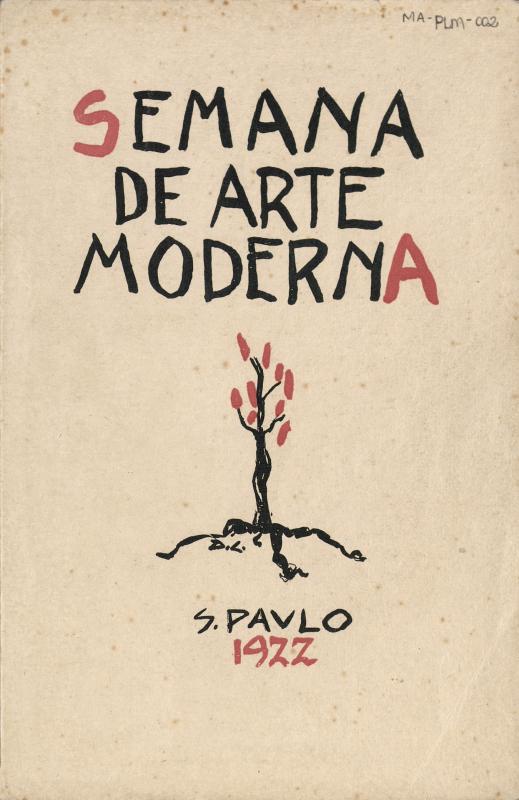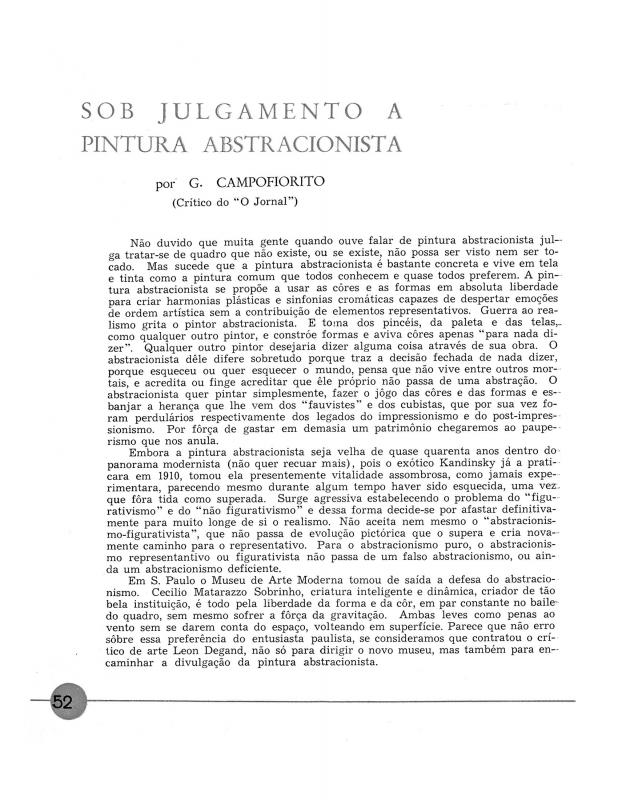At the symposium organized by the SATMA insurance company in 1949 at their Rio de Janeiro branch office, the speakers were divided into two groups. Those speaking on behalf of Realism were Emiliano Di Cavalcanti (1897–1976), Quirino Campofiorito (1902–93), and Tomás Santa Rosa (1909–56). The other group included the following intellectual champions of Abstraction: Mário Pedrosa (1900−81), the Belgian critic Léon Degand (1907–58), and Antonio Bento [de Araújo Lima] (1902–88), although he (the latter) was the least committed to this point of view.
Di Cavalcanti was, in those days, a staunch supporter of Realism. He admitted to believing in “the artist’s active involvement in the social life of his people,” whereas he viewed Abstraction as a paean to an “increasingly hermetic subjectivism that plunges the artist into a desperate, inexorable loneliness.” Such was his commitment to his belief that he sought to equate the social class struggle with the difference between Figuration and Abstraction. This modernist painter who took part in the Semana de Arte Moderna in 1922 [see doc. no. 781808] used various metaphors to refer to Surrealism and Abstraction; at one point he described them as a “narrow street that only appeals to refined beings who like putrefaction.”
As a critic of Abstract art, Quirino Campofiorito joined the group of artists who, at that time, supported Di Cavalcanti’s ideas, and described Abstract works as those whose “colors and forms were decorative” [doc. no. 1085881].


